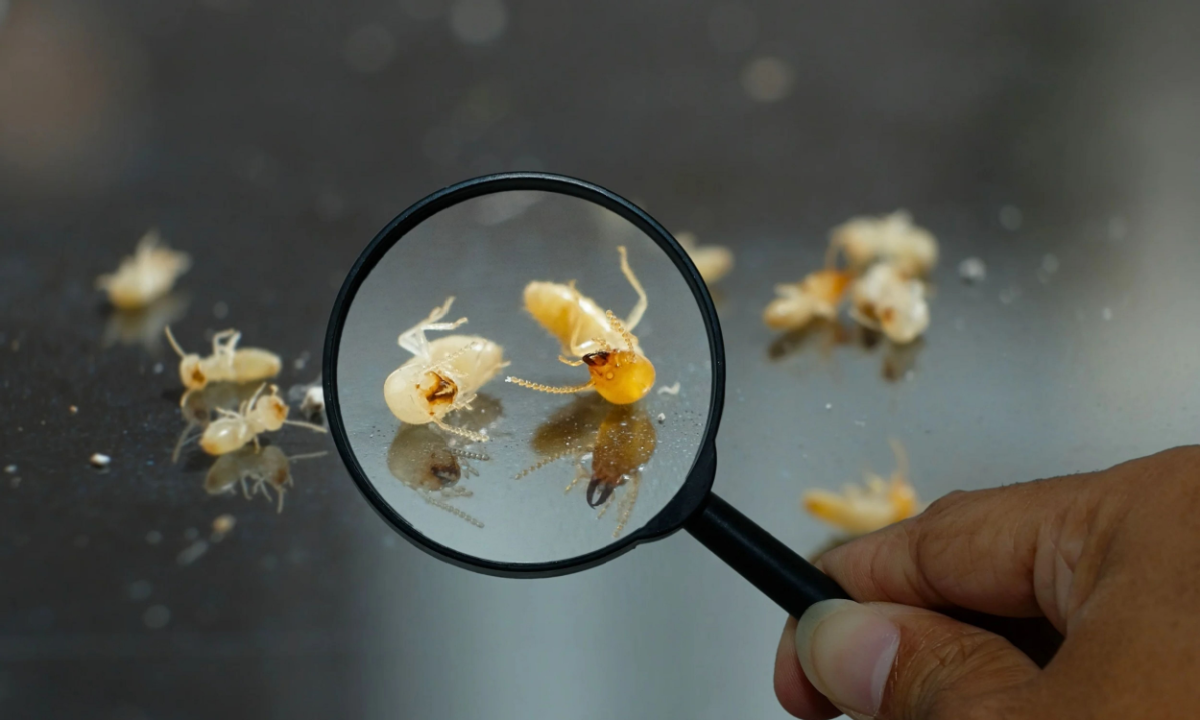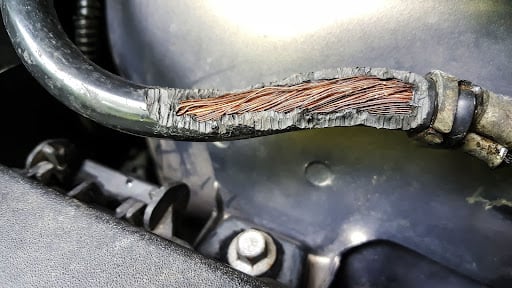While pest control may not always be top-of-mind during your day-to-day, it’s important to be prepared and know what to do if an infestation ever arrives at your door.
That’s why we always recommend our customers look into a pest control maintenance plan so that they are always prepared.
Nevertheless, some people choose to remain on the DIY route or contact an exterminator only in emergencies.
That’s why I want to dispel a few common myths that many of our customers have come to believe surrounding pest control, which leads them to make costly and dangerous decisions.
1. If I don’t see pests, they’re not there.
A massive part of pest control is prevention.
Unfortunately, many homeowners don’t often think about prevention or implement any measures until it is too late.
However, it’s very common to find bugs that homeowners didn’t even know existed during a routine inspection. For example, insects like bed bugs, cockroaches, and rodents, are nocturnal and dwell in areas that aren’t commonly trafficked, like basements and attics, meaning you’ll rarely have a chance to spot them in the open.
Furthermore, animals like rodents are sometimes less noisy than you think and could live in walls and basements without your knowledge.
That’s why I recommend every homeowner do a thorough cleaning and inspection of their home every season, checking for signs of pests, such as:
- Droppings
- Shells
- Larva
- Bite marks on walls
- Holes in wood
- Wood shavings
- The presence of spiders and other insects
- The presence of birds
In addition, you should implement some pretty standard prevention strategies, such as sealing off any openings to the outside and disposing of any trash that may attract insects.
Even if pests are not there now, this doesn’t mean you’re immune from them coming to your home in the future.
2. One pest doesn’t equal an infestation.
Similarly, many pests are social creatures and travel in packs or colonies. Some common examples of social pests include cockroaches, bees, wasps, termites, ants, and bed bug infestations.
So if you spot any of these pests, it could indicate that you have a deeper problem that you physically cannot see but is present.
In this instance, I highly recommend you contact an exterminator for a thorough home inspection and to thwart an infestation before it grows.
3. DIY pest control is cheaper.
Ignoring a pest problem or dealing with it yourself could cost you more than it could save you money.
First, not addressing the issue right away will require more extreme measures as infestations rise out of control. For instance, cockroach removal may eventually require fumigation of the entire home–though rare–which would cost more than any standard treatment.
Secondly, many people don’t know how to correctly apply pest control products, like pesticides, which could harm their health if used inappropriately.
Furthermore, most homeowners will be unable to determine if they’ve properly dealt with an infestation without a proper inspection.
In the end, mishandling an infestation will cost you more than the initial treatment from your local exterminator and probably require more extensive services.
4. Homeowners’ insurance will cover the damage.
Another risk of not addressing an infestation is the damage that certain pests, like termites and ants, can do to your home.
Unfortunately, virtually no homeowners insurance policy will cover damage from pests, and you will be left to foot a major bill.
5. I can handle most pests on my own.
Ultimately, this leads me to the most dangerous myth of all, which is that most pests can be treated DIY.
Pest control requires advanced knowledge of chemicals and dangerous products that the average layman should not handle. In addition, many pest control methods will vary by pest, as some may require intense fumigation and even evacuation of the home.
Many pests like fleas, mosquitos, rodents, and sandflies can also carry diseases that are harmful to human health, putting your family at risk if they are not dealt with accordingly.
When pest control extends beyond the point of prevention, calling your local exterminator is no longer optional.
6. Termites don’t damage brick/slab homes.
But what about if you live in a brick or slab home? What damage could termites and pests cause?
Unfortunately, termites can easily make their way through the cracks inside a brick home and attack vulnerable parts, such as the wood frame.
Furthermore, anything made of wood will not be safe from the wrath of these pesky pests, so it’s always safer to contact your local exterminator immediately.
7. A clean house is enough to prevent pests.
Another important myth related to our first query is the notion that your home is immune to pests just because it is clean.
While we certainly recommend cleaning your home of any garbage, clutter, or standing water, there are still sources of food and water that will attract rodents and cockroaches regardless.
Additionally, other pests, such as bed bugs, could enter your home accidentally after traveling, despite having a clean and bleached home.
Other factors, such as having tall grass or a yard filled with clutter, can attract bugs to your property that eventually make their way inside.
8. Cats are natural rodent deterrents.
While there is some truth to the idea that cats are natural predators of mice, they are not as effective as you think.
Primarily, it is the scent of cat urine which repels most mice from a home.
Nevertheless, not all mice will be intimidated by cats, and relying exclusively on your feline friend is generally a poor strategy to rid your home of any existing mice.
In general, cats are about as effective at stopping mice as dogs are at getting rid of squirrels on your property.
9. Rodenticides are more effective than traps.
Similarly, rodenticides are somewhat effective at treating mice, but most rodenticides take up to a full week to work. In the meantime, mouse traps are far more effective at killing mice instantly and helping to control an infestation before more mice mate and reproduce.
10. Mice are mostly attracted to cheese.
Contrary to popular belief, mice are more often than not attracted to sweeter foods, such as grains and vegetables, than cheese. One study from years ago found that food like cereal is more effective at luring mice to a trap than cheese.
Generally, mice will eat anything if they are hungry enough, so cleaning up garbage and lining traps with sweeter and more natural foods like cereals and grains will be more effective as a rat repellent.
11. Bug zappers are effective mosquito repellents.
Finally, not only has one study found that only 0.13% of insects killed by zappers are biting insects but that most insects killed by zappers benefit the environment.
As a result, you’re better off using many natural and DIY methods to repel mosquitos from your yard, including:
- Eliminating standing water
- Using neem oil
- Spraying eucalyptus and other essential oils around the yard
- Lighting a citronella candle
- Planting fennel and thyme in your garden
In fact, mosquitos are among the few insects where natural DIY methods, such as essential oils, are particularly effective at preventing infestations.
Hopefully, by dispelling these myths about pest control, you can take the right steps to rid your home of pests using the appropriate methods.
While DIY is a very popular alternative in many industries, pest control remains one industry where it is always safer to leave it to the professionals.



